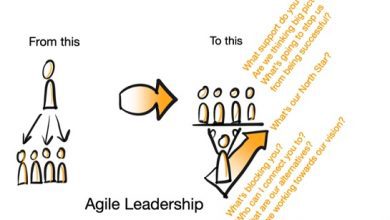HR department structure and functions
We know that technological advancement is changing the way we work. And the HR sector is no different. The Human Resources area currently has several software and management tools that make it possible to optimize the bureaucratic activities of the sector, leaving more time for it to dedicate itself to the true role of HR within organizations: human capital. In this artcle we will provide you the HR department structure and functions.
This is because there is no company without people , and when HR performs good management, focusing on behavioral profiles, it positively impacts the personal and professional lives of employees, increasing engagement and motivation — which will automatically result in better results for the business.
In this post, you will definitely understand the role of HR within a company and you will know in more detail what improvements a strategic action can bring to the organizational environment. Keep reading!
What is HR?
The acronym HR refers to the terms of human resources management, people management or human resources administration. In this sense, the area of activity is nothing more than a combination of skills, strategies and practices that aim to manage the behavior of employees and enhance their development within an organization.
Basic structure of the HR department
In larger companies, we can almost always find it, with a merely simple structure or even the most sophisticated, at the Board level.
Basically, the Personnel Department consists of three sectors: Admission, Compensation and Termination. Do you want to know more about the department and how important it is to the company? So stay with us and read the article we have prepared for you!
The Personnel Admissions department
It is responsible for taking care of the entire process of integrating the individual into the company, within the administrative and legal criteria. It begins with the
search for the professional in the job market, adapting to the functions of the position and registering in accordance with labor legislation.
The Personnel Compensation sector
He is responsible for taking care of the entire attendance control process, payment of salaries and benefits, as well as payment of fees, taxes and contributions. From the integration of employees in the company, it begins with the control of the flow of work frequency , preparation of the payroll , control of benefits and ends with tax calculations.
The Personnel Dismissal Sector
This sector is responsible for taking care of the entire process of dismissal and discharge of the employment contract, extending the representation of the company before official bodies (DRT, Union, Labor Court, etc.) and taking care of the entire inspection routine. It begins with the employee’s termination and ends when the employment contract is effectively discharged.
Admissions sector |
Compensation sector |
Dismissal Sector |
|
Attributions : Recruitment and selection Integration Record |
Attributions : workday benefits Taxation |
Attributions : Termination of work justice Oversight |
WHAT ARE THE MAIN HR FUNCTIONS?
1. RECRUITMENT AND SELECTION
This is one of the main HR fucntions. The recruitment and selection process aims to choose new employees who will be part of the company’s team. Managers need to build an efficient and productive team.
In this fucntion, job openings, R&S tests, interviews, dynamics, CV analysis, among other procedures are carried out. The objective is to attract the ideal talents that also fit the company’s culture and offer good and quality results.
The selection of professionals will have a strong influence on business results, impacting costs and profits. Therefore, this stage requires the attention and action of well-qualified HR professionals. In addition to also impacting the organizational climate and employee engagement.
2. ADMISSION PROCESSES
The admission process comes right after the recruitment and selection process and requires a lot of care and attention, as there are many bureaucratic and labor issues. In addition to being one of the first impressions that the employee has of the company, a factor that contributes to their motivation and engagement in the team.
In this process, it is necessary to register the work, fill out the work card in accordance with the law, send the employee for the admission exam, include him in the time clock and deliver the badge.
It needs to be well executed so as not to bring damage to the company, such as labor lawsuits. If it is done with caution, it will contribute to a decrease in the turnover rate, low productivity, etc.
It is important to use software to speed up this process, which is usually time consuming and requires extreme attention to avoid serious failures.
3. INTEGRATION OF NEW EMPLOYEES
After the admission process, HR is also in charge of integrating new employees. This fucntion is essential to increase the engagement of these new professionals and can reflect on how they will act and develop in the company.
Poor integration can affect a person’s motivation and performance and create a bad impression on the company. They need to be guided, trained, monitored, get to know the work team and also the entire organization.
This procedure is also known as Onboarding and can be streamlined if done digitally, facilitating several stages of this process.
4. DEVELOPMENT AND TRAINING
The training and development process is also the responsibility of HR fucntions. Training is essential not only during the employee’s integration period, but also to increase the performance and training of the entire team.
It is necessary to assess the needs of the company, the current difficulties of employees and define the type of test that should be applied. All of this requires good planning and analysis.
With training, it is possible to align professionals with the company’s expectations and generate an increase in productivity. This process can be done through learning platforms and other digital resources that facilitate application. In addition, there are many strategies, such as gamification, which aims to encourage employees to participate and engage.
5. PERFORMANCE EVALUATION
Performance appraisals serve to identify and analyze some factors in relation to the performance of employees. They are of great help, as HR managers often observe an unexpected result and do not know for what reasons it was generated.
This evaluation also allows for the recognition of the performance of a company’s employees, taking into account the following issues:
- How the function is performed;
- Performance;
- goals;
- Attitudes in the work environment;
- Development potential;
- Results.
There are several types of performance evaluation and HR needs to choose which one best fits the company’s profile and then carry it out.
6. MONITORING METRICS AND STRATEGIES
This fucntion consists of identifying metrics and results to then generate new strategies. It is common for some processes that have already worked out to no longer work these days. This is because society and the corporate world are always in constant change and older strategies can end up being outdated.
Therefore, HR must be aware of all these metrics and constantly evaluate current methods and their real efficiency. Thus, adaptations can be applied and the sector can once again offer positive and satisfactory results.
Another important factor is to always be aware of innovations and advances in technology, as they can be essential strategies to achieve the necessary improvements.
7. BENEFITS POLICY
The benefits are offered by the company to employees and it is also one of the HR fucntions to take care of this procedure. There are different types of benefits, such as:
- Transportation vouchers;
- Food vouchers;
- Health plan;
- Dental plan;
- Scholarship.
HR needs to analyze the profile of the organization’s employees and identify which benefits best fit their reality. It is a search that the sector needs to do through these analyzes to generate quality of life for the entire team.
8. SHUTDOWN PROCESS
The termination process is one of the most bureaucratic within HR. The company needs to get all the calculations right, payments, among other extremely important factors to do everything correctly and not suffer labor lawsuits. In addition to conducting the resignation interview to verify the reason for leaving, plan improvements and forward the company to a new selection process.
Due to the necessary attention and caution, using software to terminate employees is the ideal option to avoid making harmful mistakes.




